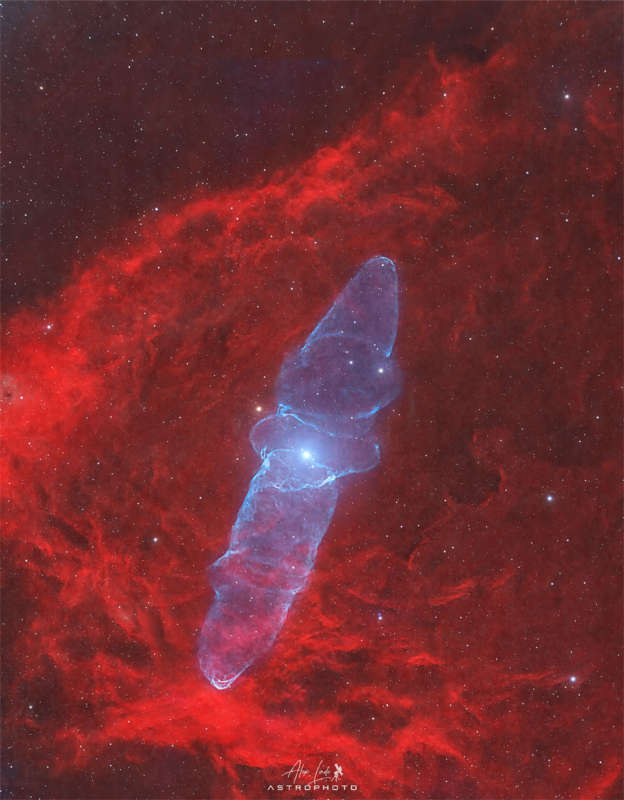Credit & Copyright: Alex Linde
Explanation:
Squids on Earth aren't this big.
This mysterious squid-like cosmic cloud spans nearly three
full moons on planet Earth's sky.
Discovered in 2011 by French astro-imager
Nicolas Outters,
the Squid Nebula's
bipolar shape is distinguished
here by the telltale blue
emission from
doubly ionized
oxygen atoms.
Though apparently
surrounded by
the reddish hydrogen emission region Sh2-129,
the true distance and nature of the Squid
Nebula have been difficult to determine.
Still, one
investigation
suggests Ou4 really does lie
within Sh2-129
some 2,300 light-years away.
Consistent with that scenario, the cosmic squid
would represent a spectacular outflow of material driven by a
triple system
of hot, massive stars, cataloged as
HR8119,
seen near the center of the nebula.
If so, this truly giant squid nebula would physically be over 50
light-years across.
1999 2000 2001 2002 2003 2004 2005 2006 2007 2008 2009 2010 2011 2012 2013 2014 2015 2016 2017 2018 2019 2020 2021 2022 2023 2024 2025 |
Январь Февраль Март Апрель Май Июнь Июль Август Сентябрь Октябрь Ноябрь Декабрь |
NASA Web Site Statements, Warnings, and Disclaimers
NASA Official: Jay Norris. Specific rights apply.
A service of: LHEA at NASA / GSFC
& Michigan Tech. U.
|
Публикации с ключевыми словами:
emission nebula - эмиссионная туманность
Публикации со словами: emission nebula - эмиссионная туманность | |
См. также:
Все публикации на ту же тему >> | |
